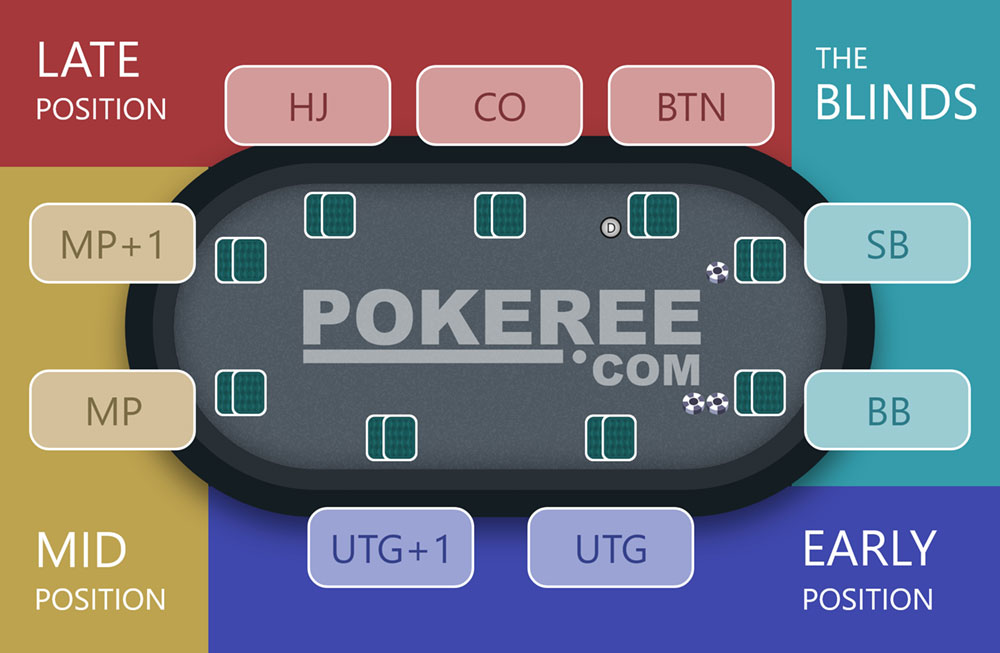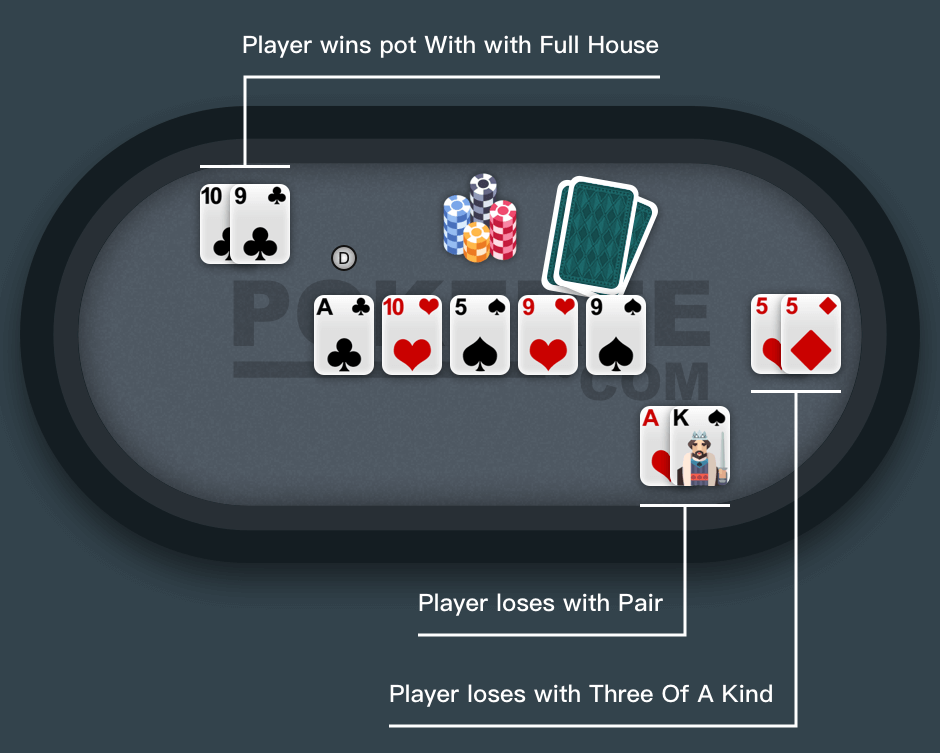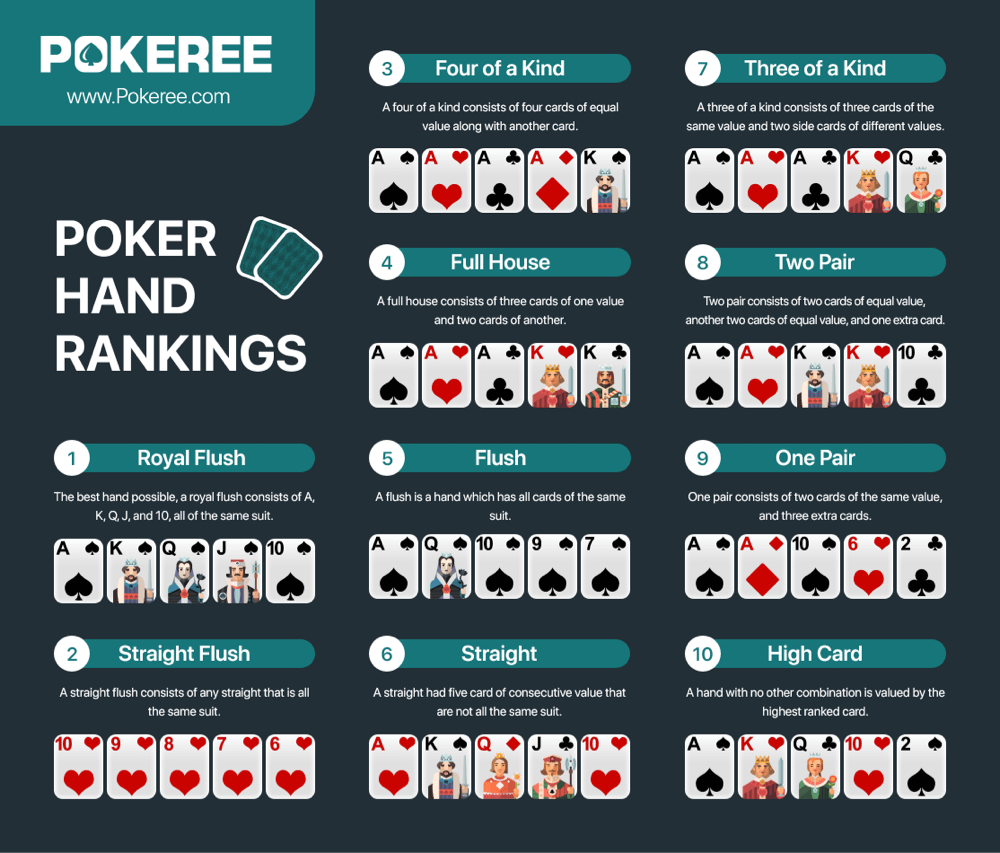Introduction
Texas hold 'em (also known as hold’em) is one of the most popular variants of the card game of poker. In hold’em, players receive two down cards as their personal hand (holecards), after which there is a round of betting. Three board cards are turned simultaneously (called the flop) and another round of betting occurs. The next two board cards are turned one at a time, with a round of betting after each card. The board cards are community cards, and a player can use any five-card combination from among the board and personal cards.
A player can even use all of the board cards and no personal cards to form a hand ("play the board"). A dealer button is used. The usual structure is to use two blinds, but it is possible to play the game with one blind, multiple blinds, an ante, or combination of blinds plus an ante.
The player who has the best hand and has not folded by the end of all betting rounds wins all of the money bet for the hand, known as the pot. In certain situations, a "split-pot" or "tie" can occur when two players have hands of equivalent value. This is also called a "chop-pot".
How to play Texas Hold’em Poker
Dealing and Betting
Hold 'em is normally played using small and big blind bets—forced bets by two players. Antes (forced contributions by all players) may be used in addition to blinds, particularly in later stages of tournament play.
A dealer button is used to represent the player in the dealer position; the dealer button rotates clockwise after each hand, changing the position of the dealer and blinds.
The small blind is posted by the player to the left of the dealer and is usually equal to half of the big blind.
The big blind, posted by the player to the left of the small blind, is equal to the minimum bet.
READ ALSO:Positions in Poker: the Importance of Poker Positions.

Opening Deal
Following a shuffle of the cards, play begins with each player being dealt two cards face down, with the player in the small blind receiving the first card and the player in the button seat receiving the last card dealt. These cards are the players' hole or pocket cards. These are the only cards each player will receive individually, and they will (possibly) be revealed only at the showdown, making Texas hold 'em a closed poker game.
First Round of Betting: Preflop
Starting with the player to the left of the big blind, each player can call the big blind, raise, or fold. The big blind has the option to raise an otherwise unraised pot.
- Call: match the amount of the big blind
- Raise: increase the bet within the specific limits of the game
- Fold: throw the hand away
The amount a player can raise to depends on the game that is being played.
In a game of no-limit Texas hold'em, the minimum opening raise must be at least twice the big blind, and the maximum raise can be all of the chips a player has in his or her stack (an "all-in" bet).
There are other betting variations in hold'em poker:
In fixed-limit hold'em, a raise is always exactly twice the big blind.
In pot-limit hold'em, players can bet anywhere from the amount of the big blind (the minimum bet allowed) up to the total amount in the current pot.
READ ALSO: Betting Variations | What are the Differences Between Fixed Limit, Pot Limit and No Limit Poker?
The Flop
The dealer burns a card, and then deals three community cards face up. The first three cards are referred to as the flop, while all of the community cards are collectively called the board.
Second Round of Betting
Starting with the player to the left of the dealer button, each player can check or bet. Once a bet has been made, each player can raise, call, or fold.
The Turn
The dealer burns another card, and then adds a fourth card face-up to the community cards. This fourth card is known as the turn card, or fourth street.
Third Round of Betting
It follows the same format as the second round, but the size of the bets have usually doubled in limit games.
The River
The dealer burns another card, and then adds a fifth and final card to the community cards. This fifth card is known as the river card, or fifth street.
Final Round of Betting
It follows the same format as the second and third rounds.
The Showdown
If a player bets and all other players fold, then the remaining player is awarded the pot and is not required to show their hole cards.
If two or more players remain after the final betting round, a showdown occurs. On the showdown, each player plays the best poker hand they can make from the seven cards comprising their two-hole cards and the five community cards. A player may use both of their own two hole cards, only one, or none at all, to form their final five-card hand. If the five community cards form the player's best hand, then the player is said to be playing the board and can only hope to split the pot, because each other player can also use the same five cards to construct the same hand.
If the best hand is shared by more than one player, then the pot is split equally among them, with any extra chips going to the first players after the button in clockwise order. It is common for players to have closely valued, but not identically ranked hands.

Hand Rankings

Variations
Limit
In limit hold’em, you must bet in specifically-sized increments. For example, in a $4/$8 limit game, you would bet in increments of $4 preflop and on the flop, then in increments of $8 on the turn and the river.
You can only bet or raise $4 during those first two rounds. You can’t place an $8 or $12 bet, though—you could raise to that amount once someone has bet, but you can’t just bet more because you feel like it.
Limit hold’em is a mathematician’s game. Some people call it a “grind.” It’s more mathematical and easier to play than pot limit or no-limit hold’em.
Pot Limit
In pot limit hold’em, you can bet as many chips as are in the pot. This is usually significantly more chips than you’d be able to bet in a limit hold’em game, and the pots in pot limit hold’em can get big fast.
No Limit
In no-limit hold’em, you can raise up to the amount of the stack of chips in front of you. If another player has fewer chips than you do, they can still call your bet, but they create a side bet. They don’t get to compete for the additional amount they can’t afford.
No-limit hold’em still has minimum bet sizes and blinds, but there’s no maximum bet. Also, if you want to raise in no-limit hold’em, you must raise at least the size of the previous bet.
No-limit Texas hold’em is the game that’s played in the championship event at the World Series of Poker.




